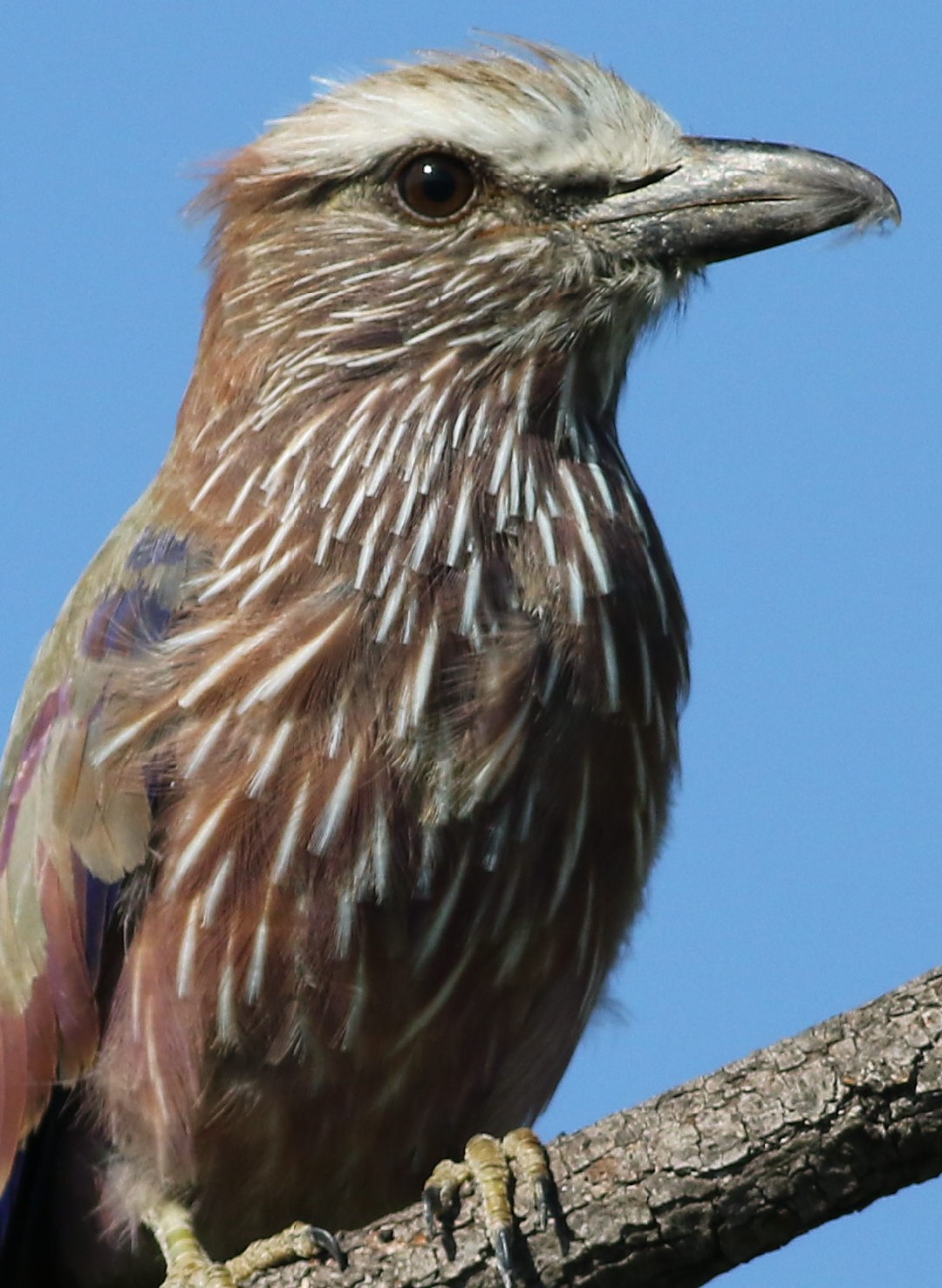Rufous-crowned Roller
A species of Typical Rollers, Also known as Mozambique Roller Scientific name : Coracias naevius Genus : Typical Rollers
Rufous-crowned Roller, A species of Typical Rollers
Also known as:
Mozambique Roller
Botanical name: Coracias naevius
Genus: Typical Rollers
Content
Description General Info
Description
The purple roller is the largest of the rollers, growing to a length of 35 to 40 cm (14 to 16 in). From a distance it appears a dull brownish bird with a white stripe over the eye, a patch of white on the nape and a dark tail. Northern populations tend to have a rufus crown while southern populations have a more olive-green crown. The underparts are purplish-pink streaked with white. The wings are long and rounded while the tail is square-cut. The voice is a rather grating "ka" or "gaa", repeated rapidly and evenly. 
Size
40 cm
Nest Placement
Tree
Feeding Habits
Rufous-crowned Roller primarily consumes large insects and small vertebrates, including locusts, grasshoppers, and beetles, along with lizards and small rodents. Hunts from elevated perches, snatching prey from the ground's surface, indicative of its specialized predatory behavior.
Habitat
The rufous-crowned Roller typically resides in open savanna woodlands and agricultural areas dotted with large trees. Its preferred environments include rocky and shrubby hillsides, as well as arid Acacia savannas. This species favors warm lowland regions within broader tropical and subtropical zones.
Dite type
Insectivorous
General Info
Feeding Habits
Bird food type
Behavior
Its preferred habitat is dry thornveld where it spends long periods perched at the top of thorn trees or poles, watching for food items such as insects, spiders, scorpions and small lizards on the ground. It rocks to-and-fro about its longitudinal axis during display flights, calling raucously all the while; starting from above the treetops it plummets towards the ground in rolling flight. It is territorial, and during the breeding season will drive off other rollers, small hawks and crows. This species seems to be an opportunist breeder, possibly linked to rains, as its breeding season varies from place to place. It nests in natural hollows in trees or uses old woodpecker holes, or in cliffs, riverbanks, pipes or holes in masonry, usually laying three white eggs. The young are fed and incubated by both parents. 
Species Status
Not globally threatened.
